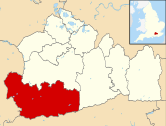
The House of Tudor was an English and Welsh dynasty that held the throne of England from 1485 to 1603. They descended from the Tudors of Penmynydd, a Welsh noble family, and Catherine of Valois. The Tudor monarchs ruled the Kingdom of England and the Lordship of Ireland for 118 years with five monarchs: Henry VII, Henry VIII, Edward VI, Mary I and Elizabeth I. The Tudors succeeded the House of Plantagenet as rulers of the Kingdom of England, and were succeeded by the Scottish House of Stuart. The first Tudor monarch, Henry VII, descended through his mother from the House of Beaufort, a legitimised branch of the English royal House of Lancaster, a cadet house of the Plantagenets. The Tudor family rose to power and started the Tudor period in the wake of the Wars of the Roses (1455–1487), which left the main House of Lancaster extinct in the male line.

Greenwich is a town in south-east London, England, within the ceremonial county of Greater London. It is situated 5.5 miles (8.9 km) east-south-east of Charing Cross.

Nicholas Ridley was an English Bishop of London. Ridley was one of the Oxford Martyrs burned at the stake during the Marian Persecutions, for his teachings and his support of Lady Jane Grey. He is remembered with a commemoration in the calendar of saints in some parts of the Anglican Communion on 16 October.
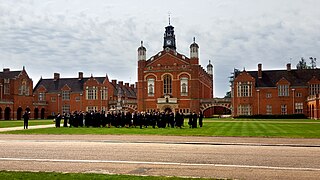
Christ's Hospital is a public school with a royal charter, located to the south of Horsham in West Sussex. The school was founded in 1552 and the royal charter granted in 1553. Since its establishment, Christ's Hospital has been a charity school, with a core aim to offer children from disadvantaged backgrounds the chance of a better education.
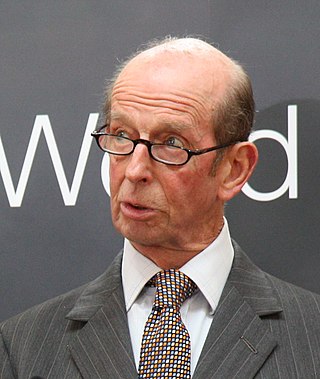
Prince Edward, Duke of Kent is a member of the British royal family. The elder son of Prince George, Duke of Kent, and Princess Marina of Greece and Denmark, he is a grandson of George V, nephew of Edward VIII and George VI, and first cousin of Elizabeth II. Edward's mother was also a first cousin of Prince Philip, Duke of Edinburgh, consort of Elizabeth II, making him both a second cousin and first cousin once removed to Charles III. He is 41st in the line of succession to the British throne.
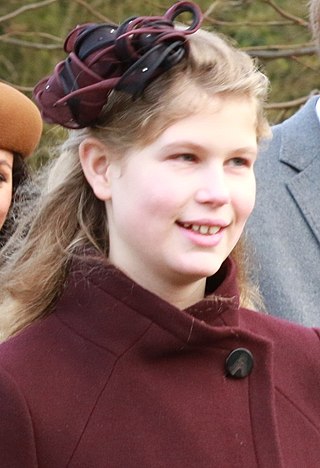
Lady Louise Alice Elizabeth Mary Mountbatten-Windsor is the daughter of Prince Edward, Duke of Edinburgh, and Sophie, Duchess of Edinburgh. She is a granddaughter of Queen Elizabeth II, and the youngest niece of King Charles III. Born 8th in line to the British throne, she is now 16th.

Birgitte, Duchess of Gloucester is a Danish-born member of the British royal family. She is married to Prince Richard, Duke of Gloucester, a grandson of George V.

St Thomas' Hospital is a large NHS teaching hospital in Central London, England. Administratively part of the Guy's and St Thomas' NHS Foundation Trust, together with Guy's Hospital, Evelina London Children's Hospital, Royal Brompton Hospital and other sites. It is also a member of King's Health Partners, an academic health science centre, and is one of three sites used by King's College London GKT School of Medical Education.

Witley is a village and civil parish in the Borough of Waverley in Surrey, England centred 2.6 miles (4 km) south west of the town of Godalming and 6.6 miles (11 km) southwest of Guildford. The land is a mixture of rural contrasting with elements more closely resembling a suburban satellite village.

Bridewell Palace in London was built as a residence of King Henry VIII and was one of his homes early in his reign for eight years. Given to the City of London Corporation by his son King Edward VI in 1553 as Bridewell Hospital for use as an orphanage and place of correction for wayward women, Bridewell later became the first prison/poorhouse to have an appointed doctor.

The Tudor architectural style is the final development of medieval architecture in England and Wales, during the Tudor period (1485–1603) and even beyond, and also the tentative introduction of Renaissance architecture to Britain. It followed the Late Gothic Perpendicular style and, gradually, it evolved into an aesthetic more consistent with trends already in motion on the continent, evidenced by other nations already having the Northern Renaissance underway Italy, and especially France already well into its revolution in art, architecture, and thought. A subtype of Tudor architecture is Elizabethan architecture, from about 1560 to 1600, which has continuity with the subsequent Jacobean architecture in the early Stuart period.
Anne of York was the fifth daughter of King Edward IV of England and his queen consort Elizabeth Woodville.

The Tudor period in London started with the beginning of the reign of Henry VII in 1485 and ended in 1603 with the death of Elizabeth I. During this period, the population of the city grew enormously, from about 50,000 at the end of the 15th century to an estimated 200,000 by 1603, over 13 times that of the next-largest city in England, Norwich. The city also expanded to take up more physical space, further exceeding the bounds of its old medieval walls to reach as far west as St. Giles by the end of the period. In 1598, the historian John Stow called it "the fairest, largest, richest and best inhabited city in the world".
Events from the 1550s in England. This decade marks the beginning of the Elizabethan era.

James Alexander Philip Theo Mountbatten-Windsor, Earl of Wessex is the younger child and son of Prince Edward, Duke of Edinburgh and Sophie, Duchess of Edinburgh. He is the youngest grandchild of Queen Elizabeth II and Prince Philip, Duke of Edinburgh, and the youngest nephew of King Charles III. At the time of his birth, he was 8th in line to the British throne. He is now 15th in line.

Sir James Sanderson, 1st Baronet was an English banker, a Member of Parliament, an alderman and Lord Mayor of London. He also served as president of Bridewell Hospital, and was a member of William Wilberforce's Proclamation Society for the Discouragement of Vice.
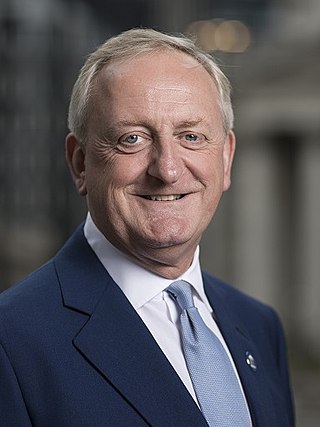
Sir Peter Kenneth Estlin was the 691st Lord Mayor of the City of London and is a British businessman.
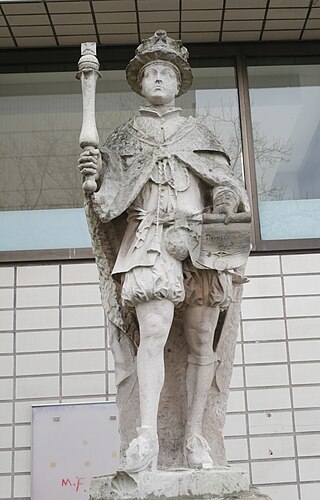
The statue of Edward VI by Thomas Cartwright at St Thomas' Hospital, Lambeth, London is one of two statues of that king at the hospital. Both commemorate Edward's re-founding of the institution in 1551. The statue was designed by Nathaniel Hanwell and carved by Thomas Cartwright in 1682, during the rebuilding undertaken by Sir Robert Clayton when President of the hospital. The statue originally formed the centrepiece of a group of figures which adorned the gateway on Borough High Street. It was moved to its current location at the north entrance to the North Wing on Lambeth Palace Road in the 20th century. It was designated a Grade II* listed structure in 1979.
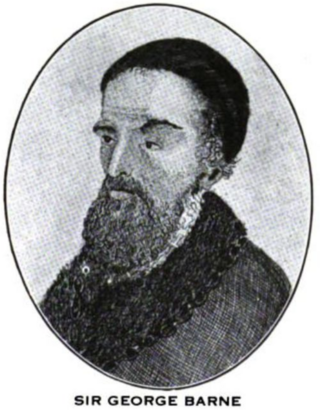
Sir George Barne was an English businessman in the City of London who was active in developing new trading links with Russia, West Africa and North America, far outside what had been traditional English trading patterns. Created a knight in 1553, he served as Sheriff of London and Lord Mayor of London. He was the father of Sir George Barne and grandfather of Sir William Barne. Nicholas Culverwell was probably a nephew.






















